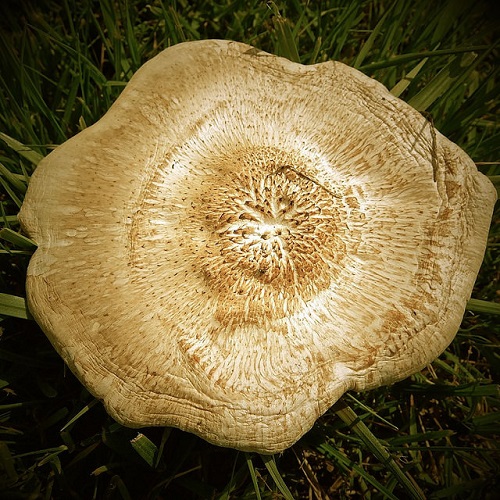The Differences between Plants and Protists
Classification
When classifying eukaryotic organisms as plants or protists, it is important to note that plants belong to the Kingdom Plantae. Protists do not form a single kingdom because they did not evolve from a common ancestor. In fact, the spectrum of species known as protists are so varied that some have no more in common with one another than they do with plants.[i] To demonstrate this diversity, consider the fact that the nuclear genome sizes in plants vary by a factor of 1000, while the protista genomes differ up to 300,000-fold in size.[ii]
Complexity
Nuclear DNA strands in plant cells have higher complexity than those in protists. This is because of the presence of genes that give plant cells the ability to differentiate into specific types according to structure and function. Totipotency leads to the formation of specialized tissues, and thus plants can develop into more complex organisms than protists.
In fact, unlike protists, all plants are multicellular. Some protists are unicellular, while some live in colonies of independent cells that communicate and cooperate tasks such as feeding and movement. These colonies are unique to the protist group. Still other protists, such as seaweed, are multicellular and even reach relatively large sizes.[iii]
Nutrition
Plants are primary producers; they are autotrophs that produce food from inorganic molecules. There are no parasitic plants that rely on other plants for nutrients. Some protists, such as algae, are autotrophs that carry out the photosynthetic process in a similar manner, using chloroplasts. However, other protists obtain nutrients in the form of organic molecules and are thus known as heterotrophs or consumers.
A group of protists known as ‘protozoans’ includes several predator and parasite species, which feed on bacteria and other protists. There are some protists known to cause diseases in humans and animals. Still other protists, such as slime molds, are similar to fungi and act as decomposers.
Respiration
Plants require oxygen for the process of cellular respiration. Here protists differ. While some protists are also aerobes, certain protist species are facultative anaerobes, capable of breaking down carbohydrates without the presence of oxygen. There are even obligate anaerobic protist species found in mud and animal digestive tracts. Some plant tissues may have facultative aerobic adaptations.[iv]
Movement
Many protists have specialized cellular structures that assist in movement and feeding and act as sensory organs. Flagella are tail-like structures that serve to propel organisms with a swimming-like motion. Cilia are shorter, hair-like structures, usually found in large quantities on the outside of the cell membrane. Cellular extensions, known as pseudopodia, have a sensory role in finding and engulfing food, as well as moving the protist.
Plants, on the other hand, are stationary life forms. Movements are limited to those of organs in a single plant individual, known as tropisms. Phototropism is the movement of plant parts towards sunlight, while thigmotropism is movement in response to physical stimulus, such as the twining of tendrils.
Reproduction
Gymnosperms and angiosperms form spores and seeds respectively to propagate further plant generations via sexual reproduction. The gametes are transported through pollination. Asexual (vegetative) reproduction is also common in plants such as bulbs and tubers. Onions and potatoes form new offspring by budding, and strawberries develop adventitious roots, known as stolons, which give rise to new plants.[v] Protists can reproduce sexually by meiosis or asexually by simple cell division; plants are unable to reproduce by one mitotic division. While some fungus-like protists produce spores, none produce seeds.
Habitat
Due to evolutionary adaptations, plants have colonised the dry-land habitats of the world. Charophyta, a phylum of green algae, is the only protist that produces sporopollenin, a water-resistant polymer. Sporangium walls, which protect the plant zygotes inside sporangia from desiccation, contain this sporopollenin compound. Thus Charophyta is believed to be the protista lineage from which land plants evolved. In contrast, protists are highly dependent on the presence of water to ensure survival of the species—much more so than terrestrial plant species.
Summary
- Protists include a variety of eukaryotes that are not necessarily closely related. Plants belong to the same Kingdom and originate from a common ancestor.
- Protists can be multicellular or unicellular organisms. Plants are all multicellular and exhibit cellular differentiation.
- Protists can be autotrophs, heterotrophic consumers, or decomposers. Plants are primarily autotrophic producers.
- Protists may be aerobic or anaerobic. Plants are mainly aerobic.
- Many protists have cellular structures that enable locomotion of the organism. Plants are stationary.
- Protists reproduce by mitosis or meiosis. Plants reproduce by meiosis (via pollination) or by vegetative reproduction.
Protists are restricted to aqueous habitats. Plant species may be aquatic or terrestrial.
- Difference Between Hybrid And GM Seeds - February 10, 2017
- The Differences between Plants and Protists - February 7, 2017
- Difference Between Schist And Gneiss - February 3, 2017
Search DifferenceBetween.net :
4 Comments
Leave a Response
References :
[0][i] Russel, P.J., Hertz, P.E., McMillan, B. Biology: The Dynamic Science, Third Edition (pp. 11, 588, 612). Belmont: Brooks/Cole Cengage Learning.
[1][ii] Genome Size. 2016. [Online]. Available: https://en.wikipedia.org/wiki/Genome_size [2016, December 26].
[2][iii] General Biology: Cell Structure (National Science Foundation). Unpublished teacher’s resources. Indiana: Ball State University.
[3][iv] Mauseth, J.D. 2014. Botany, Fifth Edition: An Introduction to Plant Biology (pp. 261). Burlington: Jones & Bartlett Learning.
[4][v] Natural and Artificial Methods of Asexual Reproduction in Plants. 2016. [Online]. Available: https://www.boundless.com/biology/textbooks/boundless-biology-textbook/plant-reproduction-32/asexual-reproduction-191/natural-and-artificial-methods-of-asexual-reproduction-in-plants-729-11958/ [2016, December 26].
[5]https://www.flickr.com/photos/themarmot/25968916276


take notes
I need more new updates as they come available.
Thank you very much.
Thank you very much